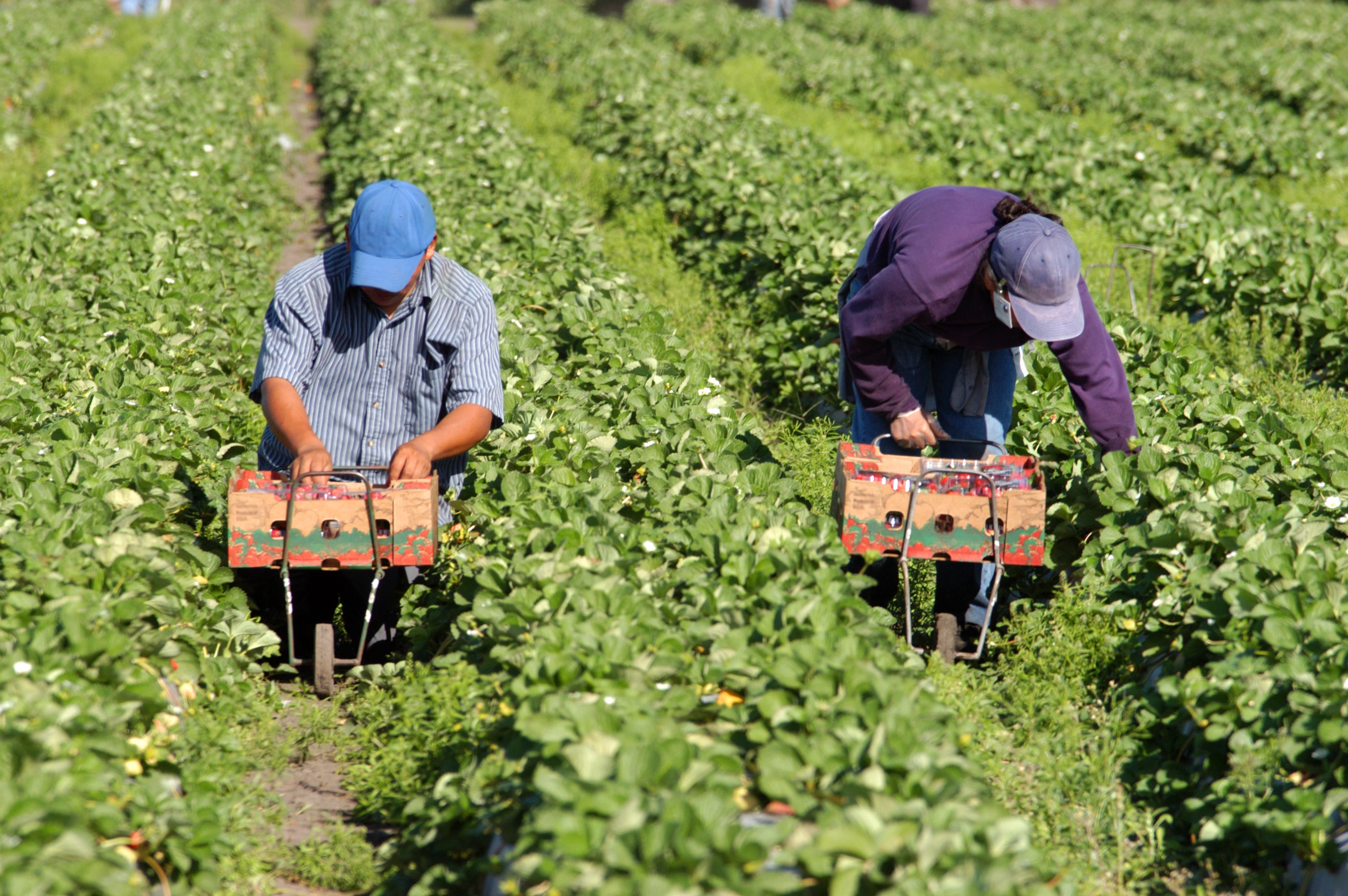
During a visit to the US border with Mexico, President Trump announced that the US was full. His comments, given during a press briefing in Calexico, California, are part of his administration’s work to prevent illegal immigration. The President was reviewing and touring an area of repaired and updated fencing at the Mexican border. The President’s comments echo similar claims that have been made recently. Patrick Buchanan made a similar argument in October that immigration should be limited because the US is already at “full employment.”
This line of argument makes a fundamental mistake about how economies work and the effects immigrants have on the economy. More careful treatments show that immigrants bring increased innovation and more economic growth to the areas that they move into.
What does “full employment” even mean?
The term “full employment” does not mean that there are no jobs available. It does not mean that someone entering the US looking for a job would only find one by competing away someone else’s job. Instead, full employment is a situation in which everyone looking for a job has one. This in no way implies that businesses aren’t looking for additional workers. In fact, in many cases, businesses are still looking but are unable to find workers. So full employment actually means that there are open positions if people want to leave their current employment for another option.
In many cases, businesses can’t find workers because US workers are poor fits for many of the open positions. That’s not because US workers would be bad at these jobs. Instead, it’s because of a mismatch between the skills and education that US workers tend to have with the lower-skilled employment options available. US workers are, on average, higher skilled than immigrants. And, in many cases, they’re already employed so they can’t take other open positions. By contrast, many of the jobs available are low-skilled, and so US workers are better suited for other, higher skilled openings.
Although there’s a demand for high-skill workers from outside of the US, especially in the tech industry, there’s a growing need for workers in other, lower-skilled jobs. Americans are increasingly taking jobs that require a college degree, and that leaves other industries without enough workers. These sorts of jobs are often filled by immigrants, especially from Central and South America. Many of these workers come in and fill gaps in labor markets and then return home, but it’s clear that businesses need more of them. If the economy meets the technical definition of “full,” then that may even strengthen the argument for additional visas.
In addition, the economic situation across America is changing dramatically before our eyes. Neil Irwin and Emily Badger at The New York Times recently wrote about this question of full employment from a slightly different angle. Focusing on the aging US population from 2007 to 2017, they show that the working-age population is declining across the United States, driven by lower birth rates and workers leaving the workforce to retire. As a result, the domestic US workforce is in decline. Irwin and Badger point to research by the Economic Innovation Group’s (EIG) report on a “heartland visa.” The EIG shows a mind-blowing map of how the prime working-age US population is shrinking in 43% of US counties.
Source: EIG
The EIG report’s central conclusion is that the US could benefit from a place-based visa. Although the proposal isn’t fully designed in the report, in short, the process that EIG envisions starts by creating a new line for immigrants to get into the US. Communities would opt-in so that participation would be voluntary. Then immigrants would be given a visa to work and live in areas where communities agree to accept them.
In the proposal, immigrants wouldn’t be tied to any specific employer, and we wouldn’t want them to be. Immigrants often bring with them ideas for new businesses and should be free to open those in areas that face falling populations or other areas that want the economic benefits of immigration.
There are also several industries in serious need of additional workers. For example, the Boston Globe recently covered the Department of Homeland Security’s announcement that they’re offering an additional 30,000 H-2B visas and the benefits that will bring. H-2B visas are for seasonal workers, farm hands, fishers, cleaners, and cooks that come into an area to help during tight times or seasonal upticks in demand for workers.
Those additional visas are in desperate demand. On January 1, 2019, the first day that applications were open, more than 97,800 workers applied for only 33,000 available visas. All 97,800 of those applied in the first five minutes.
This overwhelming demand for visas is just one example of how the application process is becoming more difficult and hindering businesses that rely on seasonal workers. For example, in Martha’s Vineyard, according to The Boston Globe, businesses avoided expanding because of a lack of workers. Nancy’s Restaurant & Snack Bar, for example, turned down tour groups because they couldn’t serve them and got rid of its reusable cups and plates because it didn’t have enough workers to wash them. Neither of these outcomes benefits Nancy’s or its customers. The customers want to eat, and Nancy’s wants to feed them, but without seasonal workers, it simply can’t find the workers it needs.
Businesses like Nancy’s that experience seasonal demand often rely on foreign workers during their busy season. This year, however, Nancy’s couldn’t bring in workers because their visas weren’t approved in time. Because of that, Nancy’s ended up paying rent on employee housing despite the rooms sitting empty for months. Doug Abdelnour Jr., the general manager at Nancy’s, says that it is much more expensive to hire workers through the H2-B visa program than to hire US citizens, but they’re his only option. US workers aren’t applying, and so he has to turn to visa programs.
Immigrants help expand even “full” economies
Understanding what full employment entails and looking at the aging US population shows that efforts to restrict immigration will likely hurt the US economy. In fact, research shows that immigrants can help expand even “full” economies and benefit low-skilled natives.
Think through the simple logic: More people may mean more competition for jobs that exist today, but they also create additional jobs by starting new businesses. Even when immigrants don’t create a new enterprise, their earnings are spent somewhere else in the economy. That allows other businesses to grow as well. For example, if an immigrant family moves into a small town, that means more people are shopping at local stores and hiring local plumbers to fix their sinks. That gives those businesses a new source of revenue to eventually expand their operations.
In places where labor is constrained, like Martha’s Vineyard, immigration also allows businesses that want to expand but can’t find workers to finally stretch out and take the next step in their growth.
Immigration experts Mette Foged and Giovanni Peri examined workers in Denmark and their response to the inflow of immigrants. They find that those additional people actually positively affected the wages and employment of natives because natives moved into less manually-intensive roles. Similar research recently released at the Center for Growth and Opportunity at Utah State University finds similar results.
All of this is in addition to the well-documented benefits that immigrants bring to the areas that they move into. A new paper in The Review of Economic Studies examines how European immigration to the United States affected economic prosperity. Looking at migration flows, they show that US counties that experienced greater immigration in the past are still benefiting today. In fact, they show that those counties have less poverty, higher employment, and tend to be more educated.

Economies aren’t full or fixed, they grow and change
Not only do increasingly stringent immigration laws push US businesses into hard decisions and limit their growth, restricting immigration will likely make future generations less prosperous. It’s time policymakers move away from immigration restrictions and towards more innovative and tailored policies like place-based visas.
Instead of the language of crisis and fear, we should see immigrants as future contributors to the United States. Additional immigration will benefit US businesses and US workers, and policies should recognize this by expanding visa programs. Fundamentally, we should be thinking of the economy as constantly growing and changing rather than fixed. There are more opportunities to go around as more people join the US. By assuming that the economy is fixed, we will almost certainly guarantee a worse future and create more harm than good for today’s America.

